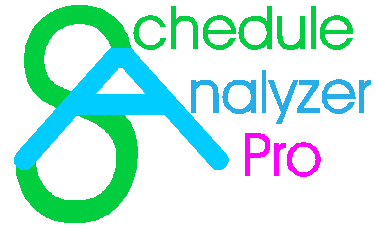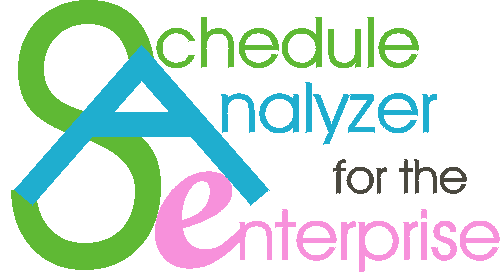 |
| Schedule Analyzer | Brochure | Longest Path Software |
 |
| Schedule Analyzer | Brochure | Longest Path Software |
 |
 |
 |
Since the inception of Critical Path Method (CPM,) Total Float has been the ‘end product’ of the entire CPM calculation. It is the difference between the early start and late start work day numbers or the difference between the early finish and late finish work day numbers. This result indicates the amount of time an activity can be delayed without delaying the completion of the schedule.
The use of Total Float to measure the importance of each activity to timely project completion has several flaws. As defined above, there are two equally acceptable methods to compute this number. In some cases (such as with interruptible activities,) the different methods produce different results. In addition, Total Float in a logic chain can vary from one activity to the next due to different activity calendars. Finally, as completed activities do not have float, activities completed out of sequence are separated from their logical predecessors and successors on reports that sort by Total Float.
Longest Path Value overcomes these flaws and provides the Scheduler with new tools to help in understanding the CPM schedule. It extends the concept of “Longest Path” to include all activities, not just the ones on the Longest Path. To be precise, activities on the Longest Path are those whose Longest Path Value is equal to 0. Click here to read more about the theory of Longest Path Value.
This program calculates the Longest Path Value of each activity in the network. To do this, it must first compute an item called “slack” which is a measurement of the free time inside of relationships between activities. The Longest Path Value is automatically inserted into any P3 schedule under the heading of the Custom Data Item titled, “PATH.” Use PATH just as you would Total Float. Click here to see such an example.
What do you do if the last activity in your schedule isn’t on the real Longest Path? With LONGEST PATH Software, you can define any activity you wish as being the Substantial Completion Activity. Then LONGEST PATH Software will use this information to define the Longest Path the way that you see it.
Here is a ‘special condition’ that you never knew how to manage. What if your project has multiple milestones; each with their own required completions and even liquidated damages? How do you determine the longest path or even critical path to each milestone? How can you control a project when you do not even know what work is pushing the completion of a milestone?
Longest Path Software can tell you the longest path to each of your milestones. Just run Longest Path Software and designate your milestone as the Substantial Completion activity. Longest Path Software will insert the values into your schedule to make that determination as simple as child’s play. Re-run Longest Path Software again to designate the next milestone and note the outcome. Analyze as many milestone longest paths as you wish!
In addition to Longest Path Value, we also retain the order in which the longest path was calculated, reverse it around and export this to your schedule as the activity Longest Path Sequence Number. This number reflects the position or sequence each activity has in the logic of the network. The Longest Path Sequence is automatically inserted into any or your schedules under the heading of the Custom Data Item titled, “LSEQ.” Use this number instead of Early Start Date to logically order the placement of activities in your reports or graphics.
LONGEST PATH Software is copyright Ron Winter Consulting LLC 2003.